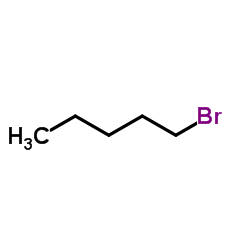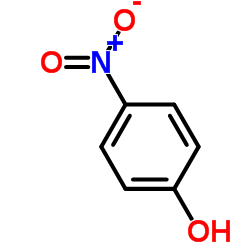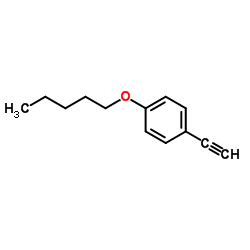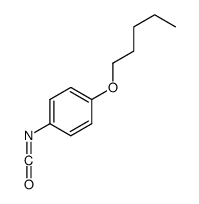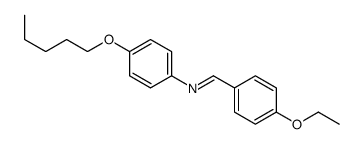39905-50-5
| Name | 4-pentoxyaniline |
|---|---|
| Synonyms |
4-pentyloxyphenylamine
4-n-pentoxyaniline 4-n-pentyloxyaniline 4-(Pentyloxy)anilin pentyloxyaniline Benzenamine, 4-(pentyloxy)- 4-pentoxyphenylamine 4-(Pentyloxy)aniline 4-Nonyloxyaminobenzene p-pentyloxyaniline |
| Density | 1.0±0.1 g/cm3 |
|---|---|
| Boiling Point | 294.2±13.0 °C at 760 mmHg |
| Molecular Formula | C11H17NO |
| Molecular Weight | 179.259 |
| Flash Point | 130.7±13.1 °C |
| Exact Mass | 179.131012 |
| PSA | 35.25000 |
| LogP | 2.87 |
| Vapour Pressure | 0.0±0.6 mmHg at 25°C |
| Index of Refraction | 1.525 |
Synonym:Benzenamine, 4-(Pentyloxy)- Section 2 - COMPOSITION, INFORMATION ON INGREDIENTS
Risk Phrases: 20/21 Section 3 - HAZARDS IDENTIFICATION EMERGENCY OVERVIEW
Harmful by inhalation and in contact with skin.The toxicological properties of this material have not been fully investigated. Potential Health Effects Eye: May cause eye irritation. Skin: May cause skin irritation. Ingestion: May cause irritation of the digestive tract. May cause cardiac disturbances. May cause methemoglobinemia, cyanosis (bluish discoloration of skin due to deficient oxygenation of the blood), convulsions, and death. The toxicological properties of this substance have not been fully investigated. May cause central nervous system depression. Inhalation: May cause respiratory tract irritation. May cause methemoglobinemia, cyanosis (bluish discoloration of skin due to deficient oxygenation of the blood), convulsions, tachycardia, dyspnea (labored breathing), and death. The toxicological properties of this substance have not been fully investigated. May cause cardiac abnormalities. Inhalation at high concentrations may cause CNS depression and asphixiation. Chronic: No information found. Section 4 - FIRST AID MEASURES Eyes: Immediately flush eyes with plenty of water for at least 15 minutes, occasionally lifting the upper and lower eyelids. Get medical aid. Skin: Get medical aid. Flush skin with plenty of water for at least 15 minutes while removing contaminated clothing and shoes. Wash clothing before reuse. Ingestion: Never give anything by mouth to an unconscious person. Get medical aid. Do NOT induce vomiting. If conscious and alert, rinse mouth and drink 2-4 cupfuls of milk or water. Inhalation: Remove from exposure and move to fresh air immediately. If not breathing, give artificial respiration. If breathing is difficult, give oxygen. Get medical aid. Notes to Physician: Section 5 - FIRE FIGHTING MEASURES General Information: As in any fire, wear a self-contained breathing apparatus in pressure-demand, MSHA/NIOSH (approved or equivalent), and full protective gear. During a fire, irritating and highly toxic gases may be generated by thermal decomposition or combustion. Vapors may be heavier than air. They can spread along the ground and collect in low or confined areas. Containers may explode when heated. Combustible material; may burn but does not ignite readily. Runoff from fire control or dilution water may cause pollution. Extinguishing Media: Use water spray to cool fire-exposed containers. Do NOT get water inside containers. For small fires, use dry chemical, carbon dioxide, or water spray. For large fires, use dry chemical, carbon dioxide, alcohol-resistant foam, or water spray. Section 6 - ACCIDENTAL RELEASE MEASURES General Information: Use proper personal protective equipment as indicated in Section 8. Spills/Leaks: Absorb spill with inert material (e.g. vermiculite, sand or earth), then place in suitable container. Avoid runoff into storm sewers and ditches which lead to waterways. Clean up spills immediately, observing precautions in the Protective Equipment section. Provide ventilation. Section 7 - HANDLING and STORAGE Handling: Wash thoroughly after handling. Use with adequate ventilation. Avoid contact with eyes, skin, and clothing. Keep container tightly closed. Avoid ingestion and inhalation. Storage: Store in a tightly closed container. Store in a cool, dry, well-ventilated area away from incompatible substances. Section 8 - EXPOSURE CONTROLS, PERSONAL PROTECTION Engineering Controls: Facilities storing or utilizing this material should be equipped with an eyewash facility and a safety shower. Use adequate ventilation to keep airborne concentrations low. Exposure Limits CAS# 39905-50-5: Personal Protective Equipment Eyes: Wear appropriate protective eyeglasses or chemical safety goggles as described by OSHA's eye and face protection regulations in 29 CFR 1910.133 or European Standard EN166. Skin: Wear appropriate protective gloves to prevent skin exposure. Clothing: Wear appropriate protective clothing to prevent skin exposure. Respirators: Follow the OSHA respirator regulations found in 29 CFR 1910.134 or European Standard EN 149. Use a NIOSH/MSHA or European Standard EN 149 approved respirator if exposure limits are exceeded or if irritation or other symptoms are experienced. Section 9 - PHYSICAL AND CHEMICAL PROPERTIES Physical State: Liquid Color: gold Odor: Not available. pH: Not available. Vapor Pressure: Not available. Viscosity: Not available. Boiling Point: Not available. Freezing/Melting Point: Not available. Autoignition Temperature: Not applicable. Flash Point: 109 deg C ( 228.20 deg F) Explosion Limits, lower: Not available. Explosion Limits, upper: Not available. Decomposition Temperature: Solubility in water: Specific Gravity/Density: .9700g/cm3 Molecular Formula: C11H17NO Molecular Weight: 179.26 Section 10 - STABILITY AND REACTIVITY Chemical Stability: Stable at room temperature in closed containers under normal storage and handling conditions. Conditions to Avoid: Incompatible materials, excess heat, strong oxidants. Incompatibilities with Other Materials: Acids, acid chlorides, acid anhydrides, chloroformates, oxidizing agents. Hazardous Decomposition Products: Nitrogen oxides, carbon monoxide, irritating and toxic fumes and gases, carbon dioxide, nitrogen. Hazardous Polymerization: Has not been reported Section 11 - TOXICOLOGICAL INFORMATION RTECS#: CAS# 39905-50-5 unlisted. LD50/LC50: Not available. Carcinogenicity: 4-Pentyloxyaniline - Not listed by ACGIH, IARC, or NTP. Section 12 - ECOLOGICAL INFORMATION Section 13 - DISPOSAL CONSIDERATIONS Dispose of in a manner consistent with federal, state, and local regulations. Section 14 - TRANSPORT INFORMATION IATA Shipping Name: TOXIC LIQUID, ORGANIC, N.O.S.* Hazard Class: 6.1 UN Number: 2810 Packing Group: III IMO Shipping Name: TOXIC LIQUID, ORGANIC, N.O.S. Hazard Class: 6.1 UN Number: 2810 Packing Group: III RID/ADR Shipping Name: TOXIC LIQUID, ORGANIC, N.O.S. Hazard Class: 6.1 UN Number: 2810 Packing group: III Section 15 - REGULATORY INFORMATION European/International Regulations European Labeling in Accordance with EC Directives Hazard Symbols: XN Risk Phrases: R 20/21 Harmful by inhalation and in contact with skin. Safety Phrases: S 23 Do not inhale gas/fumes/vapour/spray. WGK (Water Danger/Protection) CAS# 39905-50-5: No information available. Canada CAS# 39905-50-5 is listed on Canada's NDSL List. CAS# 39905-50-5 is not listed on Canada's Ingredient Disclosure List. US FEDERAL TSCA CAS# 39905-50-5 is listed on the TSCA inventory. SECTION 16 - ADDITIONAL INFORMATION N/A |
| Hazard Codes | Xn |
|---|---|
| HS Code | 2922299090 |
|
~69% 
39905-50-5 |
| Literature: Liu, Xiao-Hua; Bruce, Duncan W.; Manners, Ian Journal of Organometallic Chemistry, 1997 , vol. 548, # 1 p. 49 - 56 |
|
~75% 
39905-50-5 |
| Literature: Park, Joo-Hoon; Choi, Ok-Byung; Lee, Hwan Myung; Lee, Jin-Young; Kim, Sung-Jo; Cha, Eun-Hee; Kim, Dong-Hyun; Ramaraj; So, Bong-Keun; Kim, Kyung-Hwan; Lee, Soo-Min; Yoon, Kuk Ro Bulletin of the Korean Chemical Society, 2012 , vol. 33, # 5 p. 1647 - 1652 |
|
~% 
39905-50-5 |
| Literature: Liu, Xiao-Hua; Bruce, Duncan W.; Manners, Ian Chemical Communications, 1997 , # 3 p. 289 - 290 |
|
~% 
39905-50-5 |
| Literature: Dave; Kurian; Patel; Prajapati Molecular crystals and liquid crystals, 1984 , vol. 112, # 3-4 p. 311 - 317 |
|
~% 
39905-50-5 |
| Literature: Dave; Kurian; Patel; Prajapati Molecular crystals and liquid crystals, 1984 , vol. 112, # 3-4 p. 311 - 317 |
|
~% 
39905-50-5 |
| Literature: Buu-Hoi et al. Journal of the Chemical Society, 1955 , p. 1581,1583 Errata, 1957 |
| Precursor 6 | |
|---|---|
| DownStream 6 | |
| HS Code | 2922299090 |
|---|---|
| Summary | 2922299090. other amino-naphthols and other amino-phenols, other than those containing more than one kind of oxygen function, their ethers and esters; salts thereof. VAT:17.0%. Tax rebate rate:13.0%. . MFN tariff:6.5%. General tariff:30.0% |



